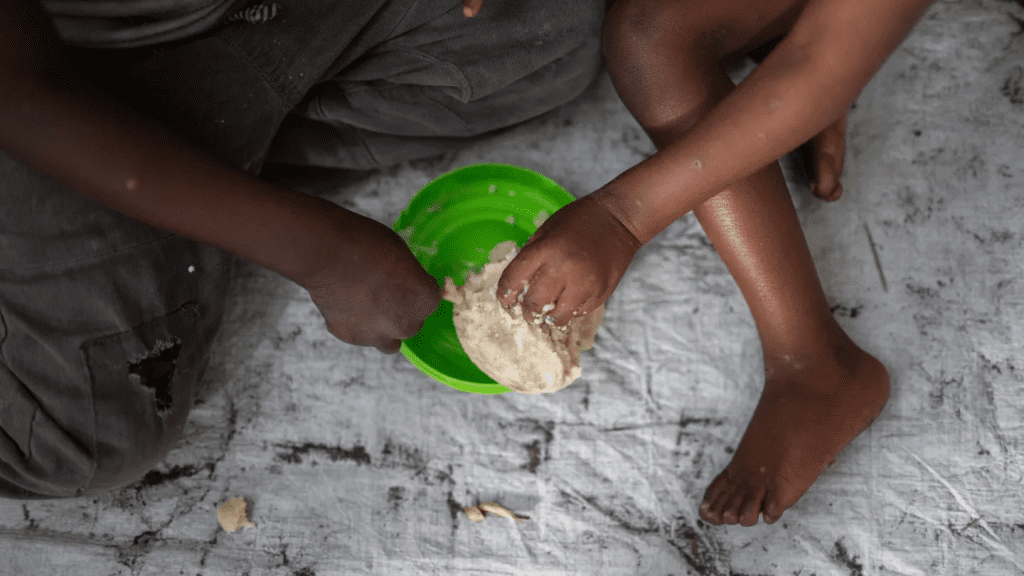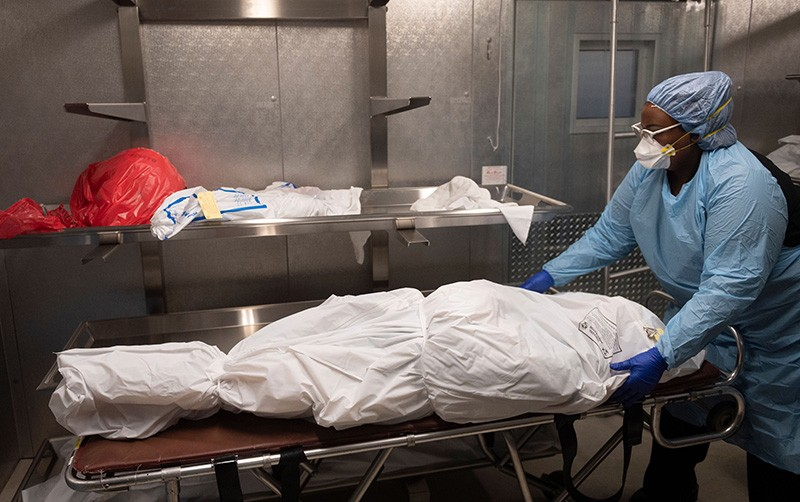A terrifying mystery illness has gripped the northwestern Democratic Republic of Congo, claiming the lives of more than 50 people within hours of them falling ill. The outbreak, which first emerged in late January, has rapidly spread across the region, with over 430 reported cases as of mid-February.
Medical experts remain baffled, as initial testing has ruled out known deadly pathogens such as Ebola and Marburg, raising fears of an unknown virus or toxic agent at play. With the World Health Organization (WHO) now investigating, the world is watching closely as scientists scramble to uncover the cause of this deadly outbreak.

A Tragic Beginning in Boloko: The First Deaths
The outbreak was first detected in the remote village of Boloko, where three young children— all under the age of five—died suddenly within 48 hours of eating a bat.
These children exhibited severe hemorrhagic symptoms, including:
✔ High fever
✔ Severe vomiting
✔ Internal bleeding
These symptoms are alarmingly similar to those seen in cases of Ebola and Marburg, two highly fatal hemorrhagic fevers. However, initial tests ruled out both viruses, deepening the mystery surrounding the illness.
Dr. Serge Ngalebato, medical director of Bikoro Hospital, has been closely monitoring the outbreak and expressed grave concerns about its rapid progression.
“What’s really worrying is how quickly patients deteriorate,” he told CNN, emphasizing that the speed of the illness leaves little time for medical intervention.
The Rapid Spread and Growing Fears
Following the initial deaths in Boloko, the disease quickly spread to the nearby village of Bomate by February 9.
✔ As of February 15, over 431 cases have been reported.
✔ At least 53 people have died within hours of falling ill.
✔ Symptoms escalate quickly, leading to death within two days.
Authorities have collected samples from 13 infected individuals, sending them to the National Institute for Biomedical Research in Kinshasa. The results, however, have only added to the confusion.
- Some patients tested positive for malaria—but malaria alone doesn’t explain the severity of symptoms.
- All samples tested negative for known hemorrhagic viruses like Ebola, Marburg, and Lassa fever.
This has led experts to suspect a new pathogen or possibly a toxic agent responsible for the outbreak.
Experts Weigh In: What Could Be Causing This Deadly Outbreak?
The World Health Organization (WHO) is now urgently investigating possible causes, with spokesperson Tarik Jasarevic stating:
“We are looking into whether it is another infection or whether it is some toxic agent. We have to see what can be done and at what point WHO can support.”

Several theories are now being considered:
1. A New, Undiscovered Virus?
With Ebola and Marburg ruled out, some fear this could be a previously unknown virus capable of spreading rapidly and killing within hours. If this is the case, it would be one of the most dangerous hemorrhagic fevers ever recorded.
2. A Toxic Agent Contaminating the Food or Water Supply?
Given that the first victims consumed a bat, scientists are also investigating the possibility of toxic contamination—perhaps linked to the consumption of bushmeat or exposure to an environmental toxin.
3. A Mutation of an Existing Disease?
Some researchers speculate that this could be a new strain of an existing disease, potentially one that has mutated to become deadlier.
Professor Paul Hunter, an infectious disease expert at the University of East Anglia, noted similarities to a previous outbreak in December, which was later attributed to malaria and widespread malnutrition.
“It is certainly possible that we have a similar issue here,” he stated.
However, Dr. Michael Head, a global health specialist at the University of Southampton, warned against jumping to conclusions.
“There is a huge amount of uncertainty about this outbreak. But what’s deeply concerning is that we have hundreds of cases, over 50 deaths, and hemorrhagic symptoms widely reported,” he explained.

The Looming Threat of Zoonotic Spillover
This outbreak has reignited fears about zoonotic diseases—illnesses that jump from animals to humans.
Over the past decade, Africa has experienced a 60% increase in zoonotic disease outbreaks.
- Bats are known carriers of deadly viruses, including Ebola, Marburg, and coronaviruses.
- Consumption of wild animals (bushmeat) remains common in rural areas, increasing the risk of new virus transmission.
- Climate change and deforestation have led to increased human-animal interactions, creating more opportunities for dangerous pathogens to emerge.
Could this outbreak be another warning sign of a future global pandemic?
What’s Next? The Urgent Need for Answers
With the death toll rising, medical experts and global health organizations are in a race against time to determine the cause of this mysterious illness.
Key priorities for scientists right now include:
✔ Identifying the pathogen – More extensive lab testing is underway to rule out or confirm new viruses.
✔ Tracing the source – Experts are investigating whether the disease originated from bats, food, water, or human-to-human transmission.
✔ Containment measures – Health officials are monitoring new cases closely and considering quarantine strategies to prevent further spread.
With past outbreaks like Ebola and COVID-19, the world has seen how quickly a localized epidemic can spiral into a global crisis. The question now is: Will health authorities act in time to prevent another pandemic?
Final Thoughts: A Growing Global Concern
This deadly outbreak in the Democratic Republic of Congo is more than just a regional health crisis—it’s a wake-up call for the world.
✔ A highly fatal, fast-spreading illness has appeared.
✔ Its cause remains unknown, raising fears of a new deadly pathogen.
✔ Global health experts are racing to identify and contain it before it spreads further.
If history has taught us anything, it’s that early detection and swift action are crucial in stopping pandemics before they begin. The world must pay attention, act quickly, and invest in global health security before it’s too late.
Will this be another mystery disease that vanishes, or the start of something far more dangerous? Only time—and science—will tell.
Stay tuned for updates as experts work to uncover the truth behind this terrifying outbreak.